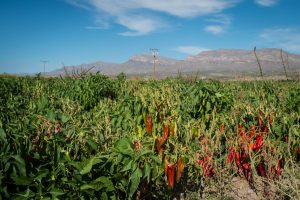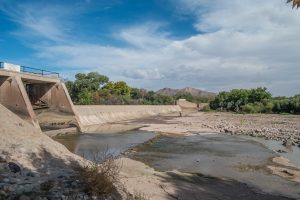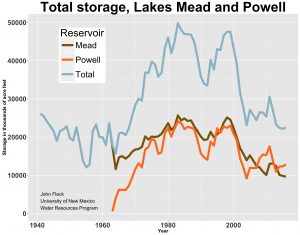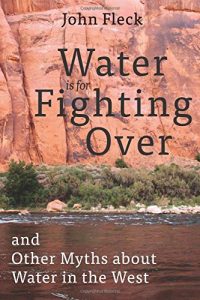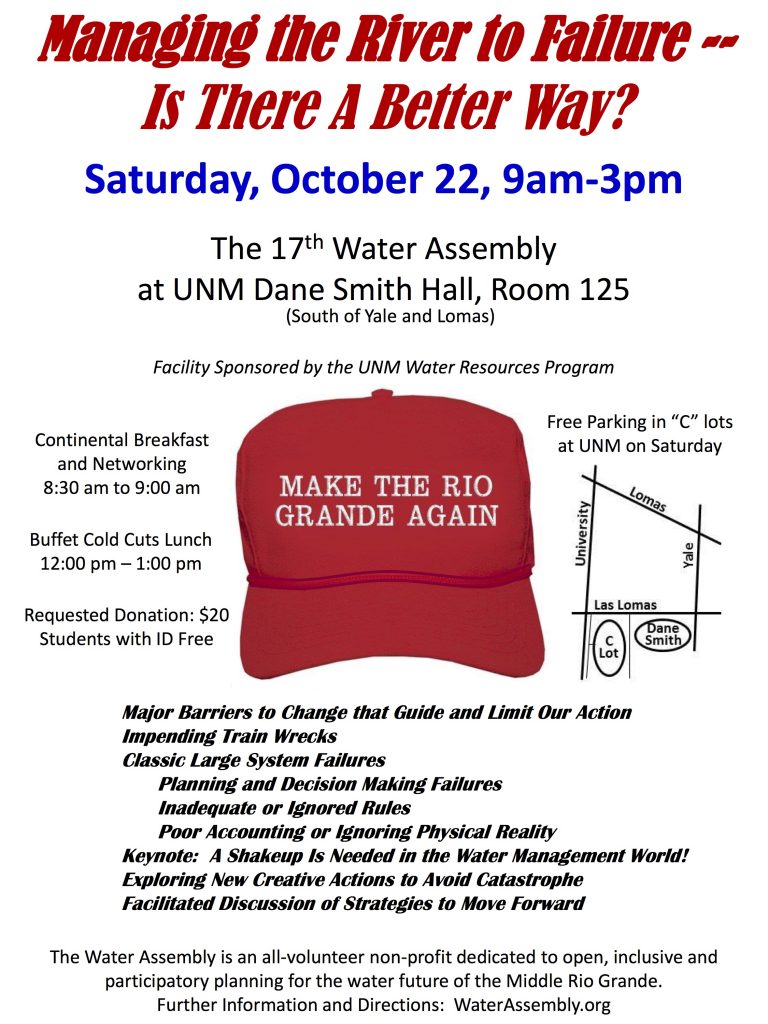Scientists have dubbed decades-long periods of aridity in southwestern North America “megadroughts“. We’ve had them in the past, and research has long pointed toward an increasing risk of them as the climate warms.
New research published last week by Cornell’s Toby Ault and colleagues has generated a wave of scary headlines – A Mega-Drought Is Coming to America’s Southwest, to cite but one – but co-author Ben Cook pointed out this morning that this paper is about more than a prediction of doom. The scientists modeled various greenhouse emissions scenarios and concluded, “An aggressive reduction in global greenhouse gas emissions cuts megadrought risks nearly in half.”
Here’s Ian James summarizing the key finding:
The researchers found that under a “business-as-usual” emissions scenario, the risk of a decades-long drought would be 90 percent in the southwestern U.S. if precipitation is unchanged. If there’s a modest increase in precipitation, the region would still face a 70 percent risk of a megadrought by the end of the 21 century. And if precipitation decreases under that warming scenario, the scientists estimated the risk at 99 percent.
If, however, humans reduce greenhouse gas emissions significantly and warming stays below 2 degrees C (3.6 degrees F) in the region, the researchers calculated the chances of a southwestern megadrought this century would decrease to less than 66 percent. If emissions are reduced further, they said, the chances would go down even more.
“Mitigation matters quite a lot for keeping risks relatively low, or low compared to the alternative, which is to just continue down our current path,” Ault said in a telephone interview. At the same time, he said, the impacts of rising temperatures in exacerbating droughts will “force us to rethink our expectations for how much water is going to be available in the Southwest.”
From the perspective of the science-policy communications interface, this is an important finding, and it’s important that we communicate and think about it in the right way. Gloomy “megadrought dooms us” headlines can lead to fatalism. But if people feel empowered – Hey there’s something we can do to make ourselves safer and reduce risk! – progress is more likely.

